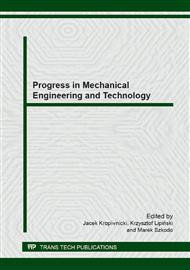p.107
p.119
p.125
p.131
p.137
p.145
p.153
p.159
p.165
Frequency Response Spectra Applied to Assess Efficiency of the Training Techniques
Abstract:
The purpose of the research is to assess the increase of the muscle strength and power. Movement of the human body when the moving one impacts a stationary or moving body is taken under consideration. The waveform produced by an impact is transformed into frequency domain. The acceleration record is transformed as a complex spectrum, by the use of a Discrete Fourier Transformation. In this paper the applications of the discrete Fourier transform is discussed and it was pointed out that it can be fruitfully applied to analyze movement techniques during competition or training exercises. The acceleration response spectrum contains knowledge about efficiency of certain techniques. It has distinct features which can show that the energy is concentrated around several discrete frequencies. Data from the shape of a frequency response spectra curve can provide the coach and the performer with valuable information on technique and also give information on recommendations with respect to corrections and adjustments that can lead to performance enhancement. In this paper, the technique of a database creation is proposed what allows us to establish a particular set of circumstances under a specified protocol to observe and evaluate the implications of the resulting observations.
Info:
Periodical:
Pages:
137-144
Citation:
Online since:
December 2013
Authors:
Price:
Сopyright:
© 2014 Trans Tech Publications Ltd. All Rights Reserved
Share:
Citation:


